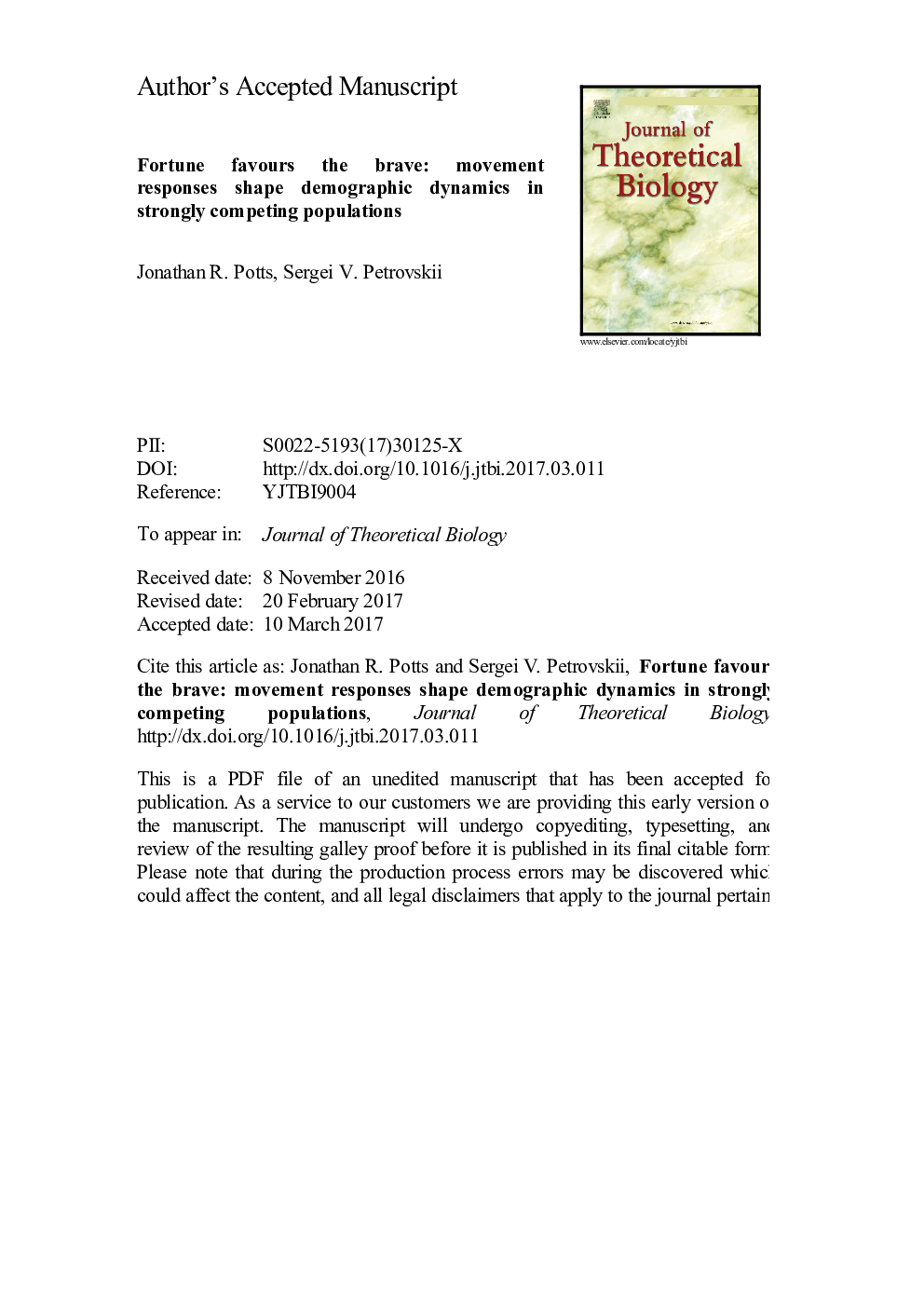| Article ID | Journal | Published Year | Pages | File Type |
|---|---|---|---|---|
| 5760056 | Journal of Theoretical Biology | 2017 | 35 Pages |
Abstract
Animal movement is a key mechanism for shaping population dynamics. The effect of interactions between competing animals on a population's survival has been studied for many decades. However, interactions also affect an animal's subsequent movement decisions. Despite this, the indirect effect of these decisions on animal survival is much less well-understood. Here, we incorporate movement responses to foreign animals into a model of two competing populations, where inter-specific competition is greater than intra-specific competition. When movement is diffusive, the travelling wave moves from the stronger population to the weaker. However, by incorporating behaviourally induced directed movement towards the stronger population, the weaker one can slow the travelling wave down, even reversing its direction. Hence movement responses can switch the predictions of traditional mechanistic models. Furthermore, when environmental heterogeneity is combined with aggressive movement strategies, it is possible for spatially segregated co-existence to emerge. In this situation, the spatial patterns of the competing populations have the unusual feature that they are slightly out-of-phase with the environmental patterns. Finally, incorporating dynamic movement responses can also enable stable co-existence in a homogeneous environment, giving a new mechanism for spatially segregated co-existence.
Related Topics
Life Sciences
Agricultural and Biological Sciences
Agricultural and Biological Sciences (General)
Authors
Jonathan R. Potts, Sergei V. Petrovskii,
